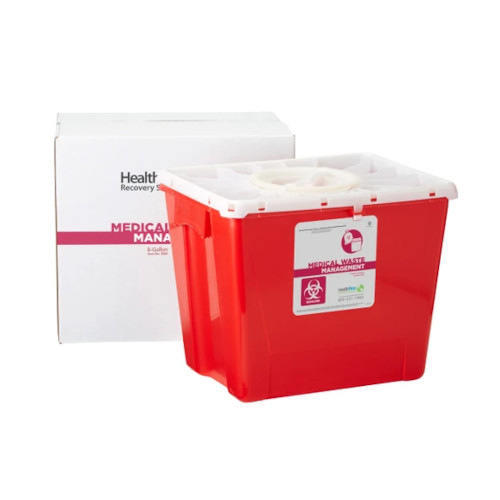Safe and Secure: The Definitive Choice for Professional Medical Waste Removal Solutions
Wiki Article
Exploring Various Garbage Disposal Options for a Cleaner Atmosphere
In the quest of a cleaner atmosphere, the monitoring of garbage disposal has arised as an essential centerpiece for lasting growth. With a plethora of waste disposal choices available, varying from typical landfill techniques to ingenious waste-to-energy technologies, the selection of how we handle our waste has far-reaching effects for our earth's health. By checking out the different approaches and strategies utilized in recycling, composting, incineration, landfill administration, and waste-to-energy processes, a deeper understanding of their effects and efficiency can be gained. The mission for ideal waste disposal methods that focus on ecological preservation while fulfilling the requirements of a growing populace stays a pressing concern in today's world.Recycling Approaches
Applying reliable reusing techniques is vital in reducing waste and promoting sustainability in our environment. Recycling entails the procedure of transforming waste materials into reusable objects to protect against unnecessary disposal. One of the most usual recycling approaches is material recuperation, where materials like paper, plastic, glass, and metal are accumulated, arranged, and refined to create brand-new items. This procedure not only saves all-natural resources however also lowers energy consumption and greenhouse gas exhausts related to producing brand-new products from the ground up.An additional crucial recycling technique is composting, which includes breaking down organic waste like food scraps and yard trimmings right into nutrient-rich dirt. By integrating these various reusing approaches right into our waste administration practices, we can significantly reduce our ecological impact and move in the direction of an extra sustainable future.

Composting Methods
Effective waste management methods, such as reusing approaches, pave the method for a cleaner environment, and now, changing the emphasis to 'Composting Techniques', we explore sustainable means to decompose organic waste for ecological advantage. medical waste removal.Composting is a natural procedure that changes natural waste, like food scraps and yard trimmings, into a nutrient-rich soil modification. The key to successful composting hinges on developing the best equilibrium of green materials, such as fruit and vegetable scraps, and brownish materials, like dried twigs and fallen leaves. These materials decay with the assistance of microorganisms, damaging down the waste into beneficial garden compost.
Typical backyard composting involves layering natural products in a bin or heap and on a regular basis turning the blend to aerate it. By utilizing composting techniques, we can lower the quantity of waste sent out to land fills while developing a valuable item for improving dirt and supporting plant growth.
Incineration Cons and pros
Incineration, as a waste disposal method, offers both advantages and negative aspects that merit cautious factor to consider in the realm of sustainable waste monitoring practices. On the favorable side, incineration can significantly decrease the quantity of waste, minimizing the requirement for land fill space and possibly reducing greenhouse gas exhausts.In addition, the high first financial investment and functional prices of incineration centers posture financial obstacles, making it a much less affordable choice compared to other waste administration methods. Mindful surveillance and law are important to alleviate these adverse impacts and optimize the advantages of incineration as component of a thorough waste management method.
Garbage Dump Management Techniques
Land fills play a crucial duty in waste monitoring and ecological conservation by offering a containment system for the disposal of strong waste products. By compacting the waste, the volume is lowered, permitting for even more waste to be suited over time.In addition, the execution of day-to-day cover techniques is essential in decreasing smells, stopping clutter, and minimizing the tourist attraction of parasites. Treatment the disposed waste at the end of daily aids to contain odors and avoid potential environmental contamination. Furthermore, the surveillance of garbage dump gas emissions and leachate levels is important in ensuring that ecological standards are fulfilled and that any kind of potential threats to surrounding ecological communities are lessened.

Waste-to-Energy Technologies
One of the cutting-edge approaches to squander monitoring involves harnessing Waste-to-Energy modern technologies to transform strong waste into usable energy sources. Waste-to-Energy (WtE) modern technologies incorporate a variety of processes that aim to remove power from waste products with thermal, chemical, or biological means. This conversion process not just lowers the quantity of waste that winds up in garbage dumps but also generates beneficial power sources such as power, warm, or biofuels.There are a number of techniques of Waste-to-Energy conversion, including pyrolysis, gasification, and incineration. Incineration entails melting waste at high temperature levels to produce heat and power. Gasification transforms waste into a syngas, which can be used for power generation or chemical manufacturing. Pyrolysis breaks down natural materials using heats in the lack of oxygen, creating char, gas, and bio-oil.
Executing Waste-to-Energy modern technologies can assist mitigate ecological problems related to typical waste disposal approaches while all at once offering an eco-friendly energy resource. Cautious consideration should be offered to discharges control and ensuring the sustainability of feedstock materials for these technologies to be genuinely useful for a cleaner environment.

Conclusion
Finally, discovering various garbage disposal choices such as reusing, composting, incineration, landfill administration, and waste-to-energy innovations is important for promoting a cleaner environment - click here. Each technique has its own advantages and obstacles, yet by utilizing a combination of these methods, we can function towards lowering the amount of waste that winds up in landfills and eventually contribute to a much more sustainable future for generations to findWith a plethora of waste disposal alternatives available, ranging company website from traditional landfill methods to innovative waste-to-energy innovations, the option of just how we manage our waste has far-ranging effects for our earth's health. medical waste removal near me.Incineration, as a waste disposal approach, offers both benefits and negative aspects that warrant careful consideration in the world of lasting waste management methods.Land fills play a crucial function in waste monitoring and ecological preservation by offering a control system for the disposal of strong waste materials. By compacting the waste, the volume is decreased, permitting for more waste to be fit over time
One of the ingenious strategies to waste administration entails utilizing Waste-to-Energy technologies to convert strong waste into useful energy sources.
Report this wiki page